900
900: Compton
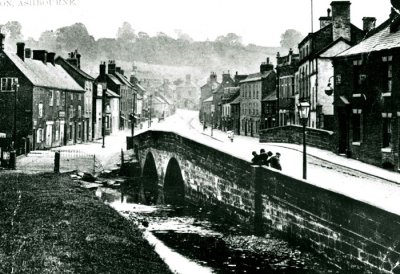
Compton today is just an area of Ashbourne but centuries ago it was an area whose traders were able to undercut the prices of traders in Ashbourne. Read More...
1050
1000: Saxon Cross remains

During the Saxon period, Christian missionaries would erect a cross to mark the place where the priest would preach. Read More...
1090
1086: St Oswald's Church
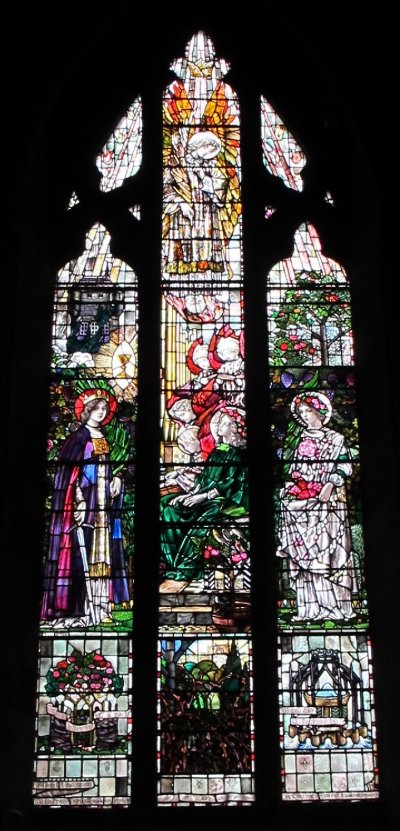
One of the grandest churches in Derbyshire, with a slender spire of 212 feet. Referred to in the Doomsday book, the present church building dates from the mid 1200's and contains fine stained glass and monuments. Read More...
1150
1547: Ashbourne Hall
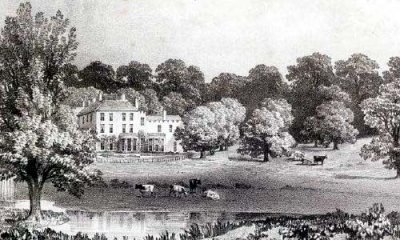
In 1547 the Hall is drawn as a rambling gabled timber framed range of buildings built around a courtyard. This had clearly grown over the years and by the Hearth Tax returns of 1662 the house had 21 chimneys making it one of the largest private homes in Derbyshire. The old hall was replaced in Georgian times. Read More...
1230
1226: Scolebrook / Henmore Brook
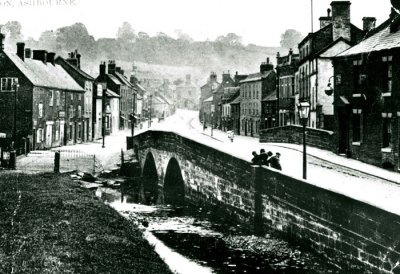
This brook is the boundary between Ashbourne and Compton, which was called Scolebrook as early as 1226. From the 1600s onwards it has tended to be called Henmore Brook. Read More...
1250
1252: Market Place
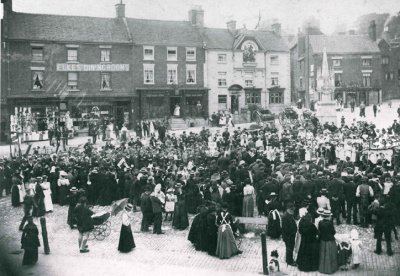
Ashbourne was substantially destroyed by fire in 1252. The present Market Place is likely to have been established afterwards. It was a large triangular space surrounded by timber frame buildings. It would have stretched from the hill on Buxton Road to the site of the Green Man Inn. The infill buildings came later. Read More...
1270
1274: Ashbourne v Compton Price Wars

In the 1270's Ashbourne traders complied with The Assize of Bread and Ale, but had their prices undercut by Compton traders. Read More...
1274: Ashbourne v Compton Price Wars.

In the 1270's Ashbourne traders complied with The Assize of Bread and Ale, but had their prices undercut by Compton traders. Read More...
1290
1287: A Barmote Court
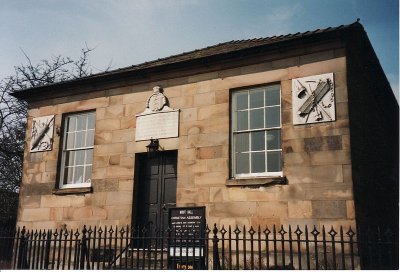
The Barmote Court was an early form of industrial court to regulate the local lead trade. One was held in St Oswald's church in 1287. Read More...
1330
1326: The Cockayne Family
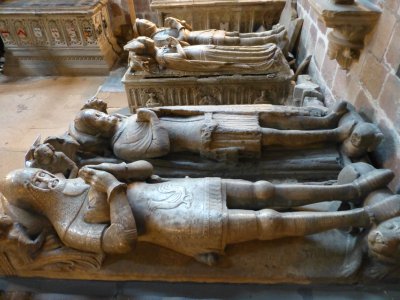
The Cockayne family were effectively 'Lords of the Manor' from 1340's to 1671. Their tombs in St Oswald's church form one of the finest family collections in the County and Country. Read More...
1490
1490: Tiger Yard

A good example of an Ashbourne “yard”; about one quarter of the Town's inhabitants lived in yards in Victorian times. Named after the Tiger Inn, now the Lamplight Restaurant, at the entrance to the yard. Read More...
1492: The Gingerbread Shop

The Gingerbread shop is one of the premises in the town which date from the Tudor period. It was built in 1492. People have shopped in this building for five hundred years. Read More...
1530
1526: Natural Choice

Behind the modern brick and glass shop front is one of 2 cruck-frame buildings in Ashbourne. This one was built in 1526. It was bought by a druggist (Victorian pharmacist) in 1856 and is now a popular health food shop and therapy centre. Read More...
1590
1585: The Old Grammar School

Queen Elizabeth I signed a charter for a Grammar School in 1585. The school opened in 1603 with a central schoolroom on the ground floor, a dormitory above and houses for the headmaster and his assistant either side. Read More...
1630
1630: Benjamin Taylor

Benjamin Taylor was born about 1630 and died in 1690. He built the present house (the Mansion) shortly before his death leaving it to his wife, Elizabeth, and after her death to his son, Thomas, who was also an attorney. Read More...
1670
1671: The Boothby family
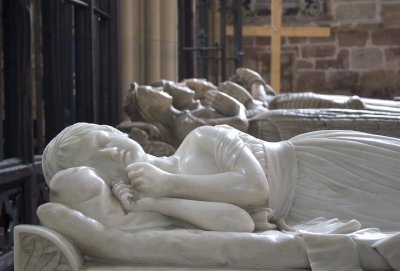
The Boothby family bought Ashbourne Hall in 1671. They landscaped the Park substantially, including diverting the Henmore and closing the Wirksworth road. The tomb of Penelope Boothby in St Oswald's church is renown. Read More...
1690
1685: The Mansion

One of the largest and most imposing gentleman’s town house in Georgian Ashbourne. Originally built in the 1680s and improved to the latest Georgian fashions (partly by Joseph Pickford) in the second half of the 18th Century. Read More...
1700
1700: Ghosts at The Old Grammar School

Local tradition is that there are 2 ghosts associated with the Old Grammar School. Read More...
1705: A.L Hulme - Fish & Game

A large Queen Anne period house built around 1700 -1710 with giant fluted pilasters, unusual in Ashbourne. The fish shop was opened in 1929 by Albert Hulme and has remained in his family until this day. Read More...
1815: The Bridge Inn, Dig St.

Originally The Three Horse Shoes public house, this building was converted into a shop before becoming a restaurant. The building at the rear was Ashbourne's workhouse until 1846. Read More...
1754: Brian Hodgson

Brian Hodgson, resident of the Grey House, was an innkeeper and business man, with fashionable inns at Stamford and Buxton and considerable investments in copper mining. Read More...
1710
1770: Dr Samual Johnson

Dr Samual Johnson wrote the first English Dictionary but had been turned down when he applied to be master at Queen Elizabeth's Grammar School. He was a frequent guest at The Mansion Read More...
1711: Dr John Taylor

Dr John Taylor was the eldest son of Thomas Taylor, a member of a wealthy Ashbourne family, who lived at The Mansion, Church St. Read More...
1720
1745: Bonnie Prince Charlie

In 1745 Bonnie Prince Charlie declared his father to be King James III in Ashbourne Market Place. His troops were billeted in Ashbourne Park. Read More...
1730
1761: Rev Dean Langton

On the wall of the north aisle of St Oswald's Church, near the transept, is a small memorial to the Rev Dean Langton who died on 28 July 1761. Read More...
1766: Joseph Pickford - Architect

Joseph Pickford, respected architect of the 18th Century worked on several houses in Ashbourne. Read More...
1755: John Wesley

The Ashbourne Methodist Society was officially formed in April 1755, when John Wesley stopped at Ashbourne and preached to a "deeply serious congregation". Read More...
1731: Erasmus Darwin

Erasmus Darwin was the grandfather of Charles Darwin. After an education at Cambridge, he lived at Lichfield and later in Derby. He worked as a country doctor. Read More...
1740
1737: Francis Beresford

Francis Beresford (1737- 1801), of Compton House, was a younger son of the main Beresford gentry family. He became an attorney and made his fortune from coal mining and the Butterley Company at Ripley in Derbyshire. Read More...
1788: William Brunt

Dr Taylor died in 1788 and left his house (the Mansion) to a distant relative William Brunt. Read More...
1760: Rev William Langley

The Rev William Langley was the Head Master of The Old Grammar School for nearly 43 years in the late 1700s. Read More...
1770: James Boswell

James Boswell was a companion and biographer of Dr Johnson and visited Ashbourne with him when Johnson stayed at The Mansion. Boswell stayed at The Green Man. Read More...
1750
1750: The Grey House

An imposing stone faced Gentleman’s house with probably the best Georgian frontage in Ashbourne. Read More...
1750: The Green Man

The Green Man was built in the 1750s to service the growing coaching trade in Ashbourne. It had a “drive through” design with a central entrance for coaches and an exit onto neighbouring Dig Street. Read More...
1785: Thomas Hemsworth

The malthouses behind Manion Antiques were built by Thomas Hemsworth circa 1785, and were a key part of the local brewing industry. Read More...
1750: Dr Taylor 'King of Ashbourne'

Dr Taylor had a love of conspicuous consumption and ostentatious display. Read More...
1760
1755: The Ashbourne Methodist Society

The Ashbourne Methodist Society was officially formed in April 1755. Read More...
1770
1766: Compton House

Compton House is the most substantial building in Compton. It is a Georgian house built around 1766 for Francis Beresford. The architect was the well known Derbyshire architect, Joseph Pickford. Read More...
1790
1785: Manion Antiques

These buildings were once used for the production of malt, rope and tanned leather! Read More...
1790: Bull Baiting

Bull baiting took place in the Market Place. It had been very popular public entertainment since Roman times until it was finally banned in 1835. Read More...
1793: Darwin's Theory of Education

Erasmus Darwin believed that young women should be provided with an education which included scientific subjects as well as modern languages. Read More...
1793: Madge House

The site of a girl's school run by Erasmus Darwin's 2 illegitimate daughters. Erasmus was Charles Darwin's Grandfather. The house, which was originally a public house called The Old Nags Head Inn, is named after a well respected local doctor in the 20th Century. Read More...
1800
1797: Shrovetide Football
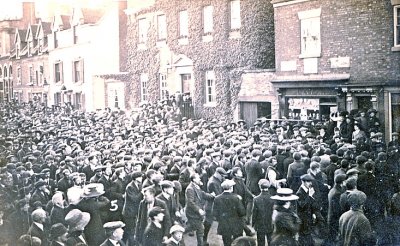
Probably the best known of the 15 remaining Festival Football games played in Britain, the game at Ashbourne is takes place throughout the streets each year on Shrove Tuesday and Ash Wednesday. The boundary between the two teams, Upards and Downards, is the Scolebrook/Henmore Brook. Read More...
1790: The Cheddar Gorge

A fine example of an 18th Century commercial building with an early 19th Century shop front. Read More...
1800: Shakespeare’s Yard
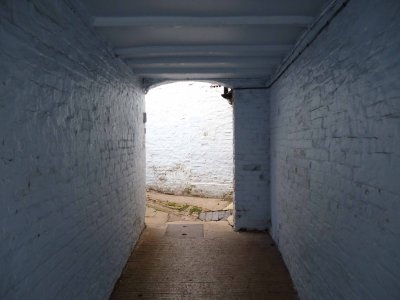
Shakespeare’s Yard still has the surface drain from the slaughter house originally at the rear of the shop. You would have needed to look where you walking if you used this yard then. Read More...
1800: Waterloo House
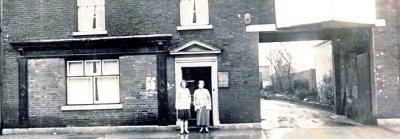
No 14 Compton House, Waterloo House, is a Georgian House with a later shop front. Read More...
1802: French Napoleonic PoWs
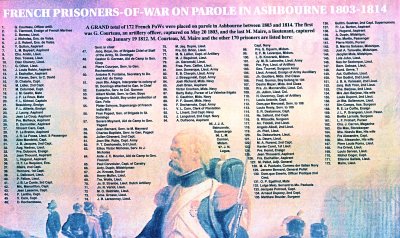
Ashbourne was one of the towns in Britain which had French PoWs billeted on them. French officers and their servants were housed around Ashbourne. One, John Peterson, stayed and is buried in St Oswald's church. Read More...
1810
1806: Francis Wright

Francis Wright came from a local family and was a successful businessman and entrepreneur. He was a generous benefactor to Ashbourne but opposed Shrovetide Football. Read More...
1830
1829: Catherine Booth

Catherine Booth was wife of General William Booth and co-founder of the Salvation Army. She was born at 13 Sturston Lane (now Road), Ashbourne in 1829. There is a bust to her in Ashbourne Park. Read More...
1830: The Green Man's Largest Visitor

Mademoiselle d'Jacque, a 7.5 ton elephant, stayed in the Green Man in 1830. Read More...
1833: 31 and 33 Market Place
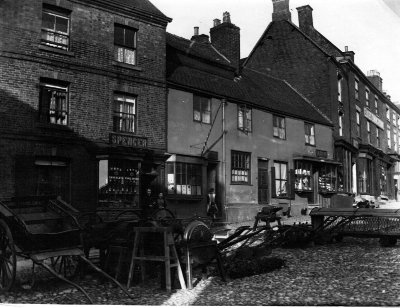
From 1833 until 1963 No 31 was the family run business by the Adin family over 5 generation. In 1897 the combined premises were demolished and the two storied building was replaced by the present three storied building. Read More...
1860
1861: Town Hall

The Town Hall, historically referred to as The Market Hall, is constructed from stone in an eclectic architectural style typical of its date – 1861. The architect was Benjamin Wilson and the style is essentially Italianate. Read More...
1870
1873: The Wright Monument
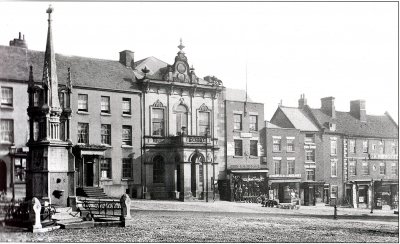
On the north side of the Market Place is the Wright Monument. It was “Erected by public subscription to the memory Francis Wright as a record of his valuable services to this town and neighbourhood” Read More...
1880
1880: The Methodist Chapel
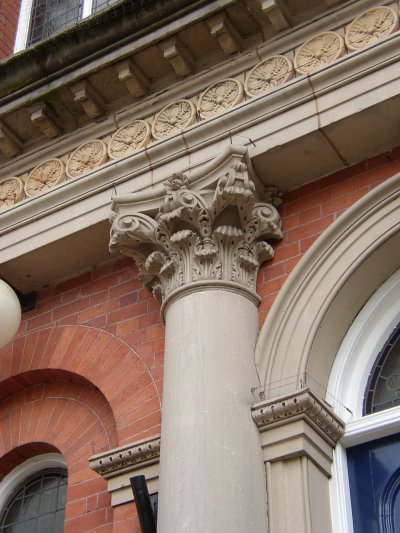
This Chapel was built in 1879-81 to replace an earlier chapel in Compton. It has an Italianate Neoclassical facade, reflecting a period when non-conformists wanted to make their chapels look different from the Gothic revival churches. Read More...
1890
1875: James Osborne
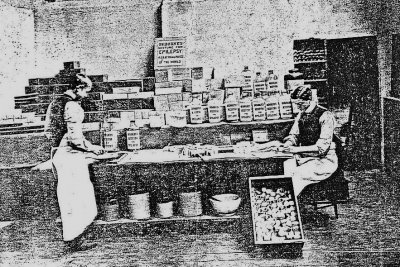
James Osborne's fortune was founded on his "Mixture for Epilepsy", which was exported from No 24 all around the world. Read More...
1900
1929: Albert Hulme

Albert Hulme purchased Nos 24 to 26 Church Street in 1929, to open a family Fishmongers, which is still in business today. Read More...
1920
1922: Ashbourne Park

Ashbourne Park is a surviving part of a medieval deer park. It remained part of the Ashbourne Hall estate for over 800 years and was recorded as an impaled park on a map of 1547 and described in England’s oldest rhyming epitaph as one of three hunting parks created by the Cockayne family. Read More...
1930
1930: Fatal Accident at Town Hall Yard

Mr Tom Fearn was killed in the Market Place when the balance bar from the firebell fell on him. Read More...
Ashbourne Through the Ages
Click on the image below and travel through time to learn the key events that happened and which shaped the town as we know it today.
Education in Ashbourne
Click on the image below to explore the evolution of education, and specifically Queen Elizabeth's Grammar School, from 1583 through to the modern day. For Library Kiosk users click here.
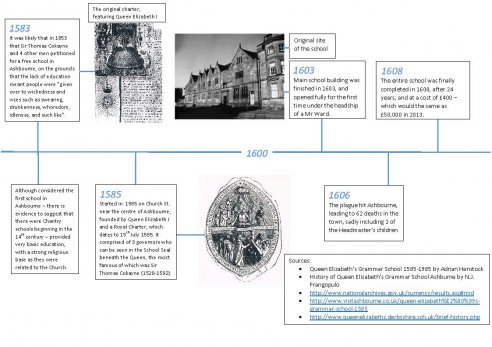
Compiled by: Daniel Hollins - Sixth Form Student,
Queen Elizabeth's Grammar School


